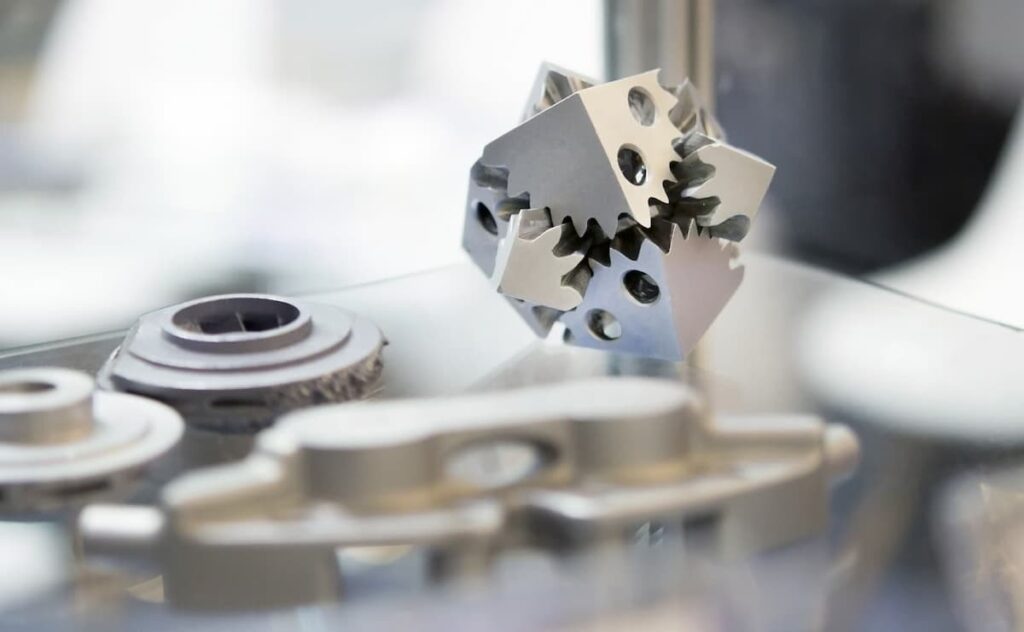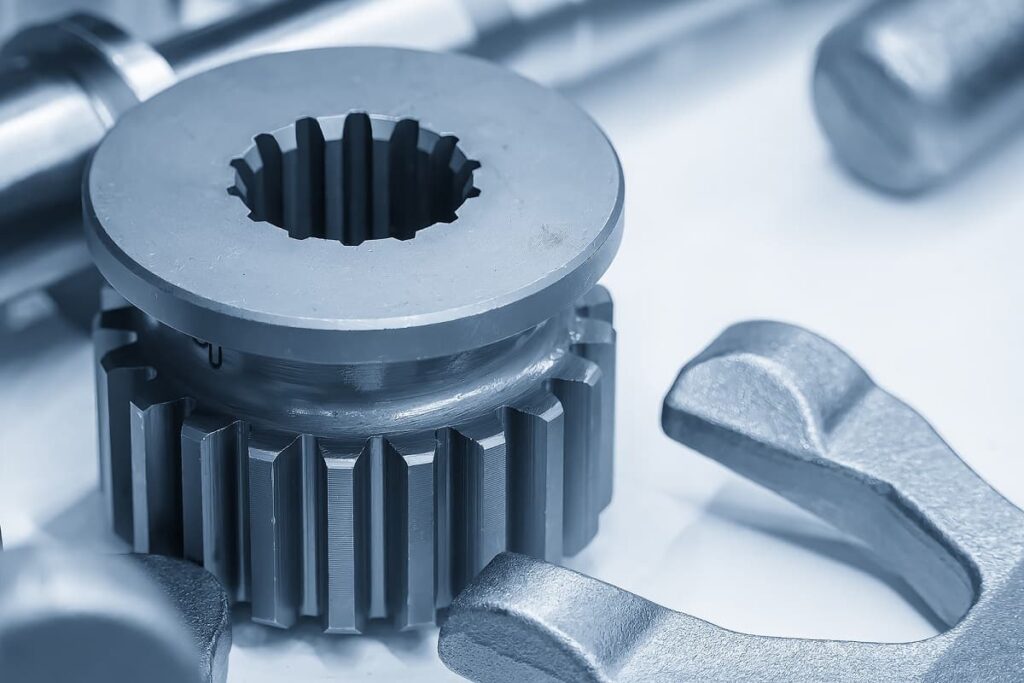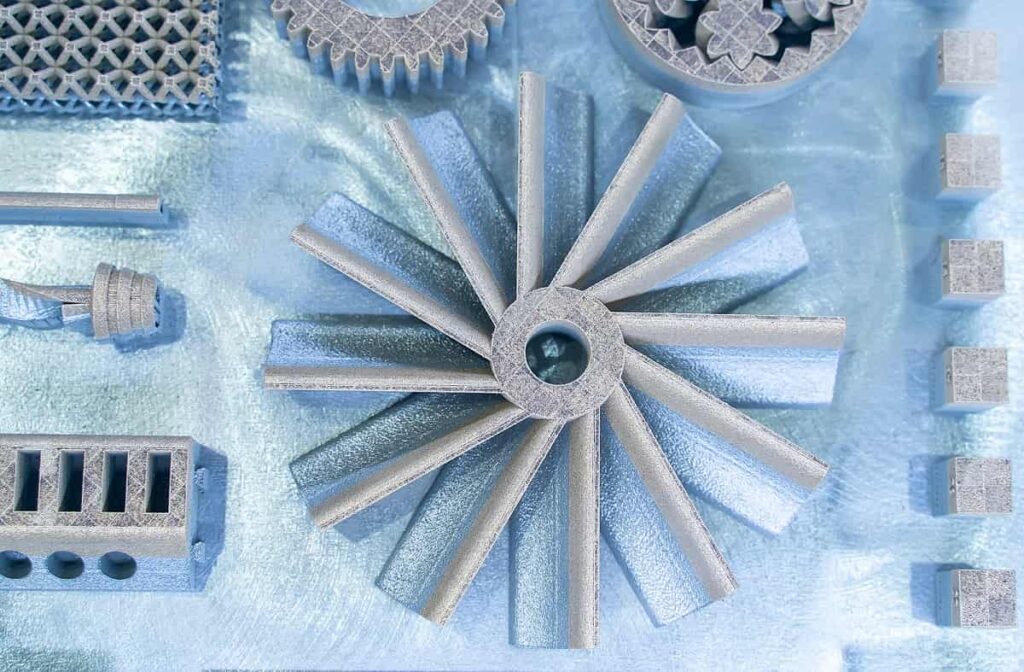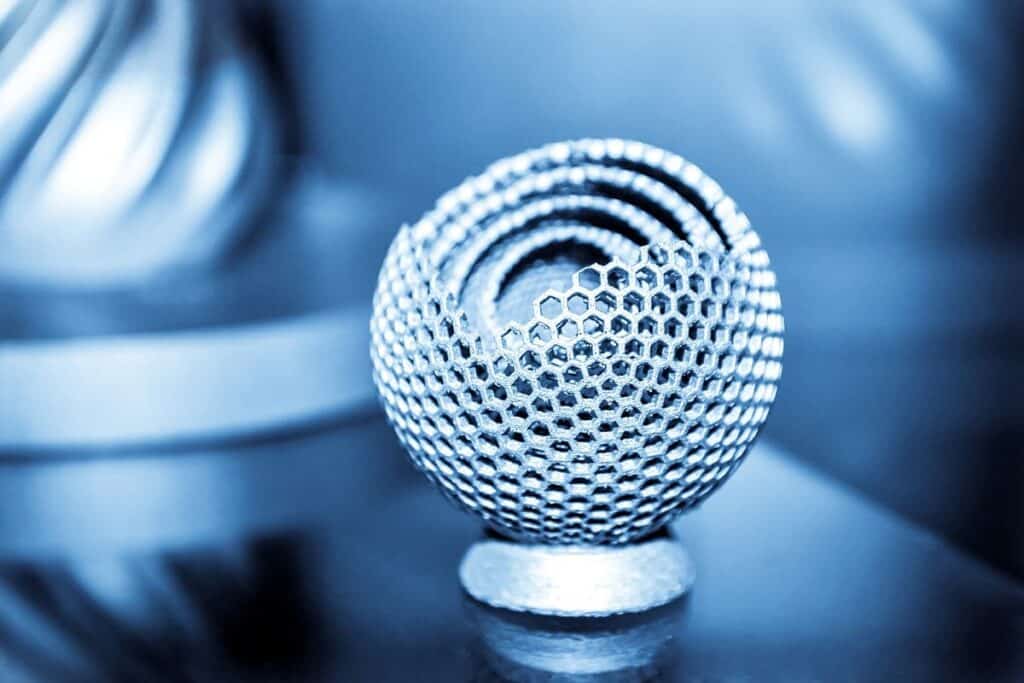10 Powder and Binder Metal 3D Printing Companies
Table of contents

One reason why you should be overly cautious when it comes to technology investing is that great stories don’t often make for great investments. You also need a stomach for volatility since technology stocks are extremely volatile. That’s because technology itself changes so fast. Before you know it, your golden goose egg has pulled a Bind Therapeutics. There’s also the notion of Gartner’s Hype Cycle which says that even though a technology may have great potential, it often takes a while for the potential to be realized. That means lots of stock price volatility that most investors find difficult to handle.

That’s where we seem to be with 3D printing, and popular 3D printing stocks appear to be slowly trudging up the slope of enlightenment recently. Here are a handful of 3D printing stocks that were hitting new highs back when 3D printing was cresting over the peak of expectations along with their 5-year returns:
- Stratasys (SSYS) – From $111.94 per share to $22.98 a share – 5YR return of -79%
- 3D Systems (DDD) – From $60.07 per share to $10.92 a share – 5YR return of -82%
- ExOne (XONE) – From $39.93 per share to $9.59 a share – 5YR return of -76%
Like many others, we were – and still are – quite excited about the potential of 3D printing and consequently want to keep tabs on popular 3DP stocks. While we usually like to take a “set it and forget it” approach to investing, with technology it’s a bit different. You need to check in more often and see if everything’s still on track. In the case of ExOne, we were interested to learn more about the current state of powder and binder metal 3D Printing, so we sat down to talk with the CEO of Digital Alloys, Duncan McCallum.
Powder and Binder Metal 3D Printing
In last week’s article on Digital Alloys, we looked at a fast, low-cost method of 3D printing metals called Joule Printing. We were surprised to see at least 50 companies working on metal 3D printing, each pursuing their own technology. Today, we are interested in the below grouping of companies that are all using a similar type of technology to 3D print metals – “powder + binder.”

We first need to understand what “powder + binder” printing entails. In its basic form, this means that a “green part” is created using metal powder plus a binder that holds the powder together. The binder is then removed from the “green part,” and the raw part is then sintered to try to shrink it to full density and strength. Under the category of “powder + binder,” we have three sub-categories:
- Material Jetting – Uses liquid instead of powders and can attain high-resolution prints but slower
- Material Extrusion – Nozzles extrude a combination of metal powder along with some form of binder. Slower than jetting and useful as a small machine in an engineer’s office. Most useful as a prototyping solution
- Binder Jetting – Nozzles sprays binder agent onto a bed of powder. Can print many parts at once.
Let’s take a quick look at the various companies in the above categories.
Material Jetting

Material Extrusion
Founded in 2013, French firm Pollen AM has developed a metal 3D printer that uses Metal Injection Molding (MIM) feedstock pellets instead of wires or powder. If you’re unfamiliar with how MIM works, Wikipedia describes it as “a metalworking process in which finely-powdered metal is mixed with binder material to create a ‘feedstock’ that is then shaped and solidified using injection molding.” Mr. McCallum compared this to the feedstock used by Desktop Metal’s Studio system which essentially consists of rods that combine powder with binder. In a May 2018 article by 3D Printing Industry, the company was said to have raised about 2.5 million euros in private money ($2.8 million USD) so far in five rounds. They’ve also secured some grants from French public money and hope to raise institutional money in “early 2019.”
A few years ago we wrote about Markforged in our article on “General Electric’s Plan for 3D Printing with Metals.” They’ve taken in $54.8 million in funding to build metal 3D printers that use metal powder bound in plastic which is printed a layer at a time into the shape of your part. The parts are scaled up to compensate for shrinkage during the sintering process, which makes one wonder just what sort of accuracy that process is capable of.

In an article by ASME, Markforged’s CEO was quoted as saying “the production line is the killer use case, especially high-value, low-volume products like custom jigs, tools, and fixtures that improve productivity.” They also support other materials like kevlar, carbon fiber, and fiberglass.
Update 03/20/2019: Markforged has raised $82 million in Series D funding to continue working on their mass production printers and expanding available materials. This brings total funding to $136.8 million to date.
Interesting side note. Our next firm, Desktop Metal, filed a lawsuit against Markforged over intellectual property while Markforged filed a lawsuit against Desktop Metal claiming “theft of ideas.” Rumors are that the lawsuit settled in Markforged’s favor. The bad blood could stem from the fact that the CEO of Desktop Metal was a board member at Markforged before he went off to start Desktop Metal.

Binder Jetting


Now, their focus is to stop burning through cash with a stated goal of “net income and positive operating cash flow in 2019.” With all the competing technologies out there, they’ll need to keep spending money on R&D to stay competitive which appears to be their focus as well.




The press release went on to say that Commercial HP Metal Jet solutions will be offered at under $399,000 and begin shipping in 2020 to early customers and with broad availability in 2021. More about the printer can be found in this 8-page fact sheet.
In Q1 2019, HP’s printing business only constituted 34% of their revenues but accounted for 67% of their profit, probably resulting from their high-margin consumables business. The move into 3D printing metals shows HP can still innovate, but their printing business still faces a lot of threats – like Landa and their NanoInk.
As the largest publicly traded 3D printing stock with a $1.25 billion market cap, Stratasys (SSYS) is finally making the jump into metal 3D printing. In yesterday’s presentation on their full-year 2018 results, they list a Layered Powder Metallurgy (LPM) metal 3D printer under their growth strategy. This product was recently unveiled, hailed as “breakthrough” as one does, and will initially print aluminum parts. An article by TCT Magazine says that the tech is expected to see its first commercial use with European auto manufacturers this year.

As we look towards 2025 we see the growth of additive in GE driving the need for more than 1,000 machines. This equates to new additive machines being brought online in GE every three days over the next decade.
The reason for that growth is because GE Aviation was expecting $3 billion in cost savings from switching to 3D printing and it was implied in that call that the acquisitions made sense solely on the basis of GE Aviation’s need for metal 3D printers.
In that same call, GE spoke of their additive manufacturing business stating, “We expect the business to have about $300 million of revenue in 2017 and grow quickly to $1 billion by 2020.” That’s nothing when you consider GE had $128 billion in revenues in 2018. Fast forward to today and they don’t break down their financials enough to gauge how on track they are to hit that target. Given that they’re an investor in Desktop Metals, maybe they’ll look to continue growing their metal 3D printing capabilities with another acquisition.
Conclusion
If you’re interested in learning more about the pros and cons of each metal 3D printing technology, Mr. McCallum pointed us to this report by 3D printing consulting firm Ampower which goes into great detail on which metal 3D printing technologies you might consider for various applications. As the below chart shows, there are many variables which help determine the most suitable technology for any given application.

Even though you hardly hear much about “hot 3D printing stocks” anymore, the industry is moving full steam ahead trying to make metal 3D printing applicable to a wider variety of use cases, and increasingly competitive against traditional methods like CNC machining. It’s also interesting to see the different business models being used, and one of those business models, “on demand manufacturing,” seems to be quite popular lately with several firms taking in recent funding. That’s what we’re going to look at next.
Sign up to our newsletter to get more of our great research delivered straight to your inbox!
Nanalyze Weekly includes useful insights written by our team of underpaid MBAs, research on new disruptive technology stocks flying under the radar, and summaries of our recent research. Always 100% free.















Check out Prima industries, Prodways and renishaw as European alternatives
Thank you for the comment.
Looks like Prima uses lasers and punching – so subtractive, not additive.
Looks like Prodways uses “Direct Energy Deposition” and Reinshaw uses “Powder Bed Fusion.”
Stay tuned for more articles that explore other types of metal 3D printing.